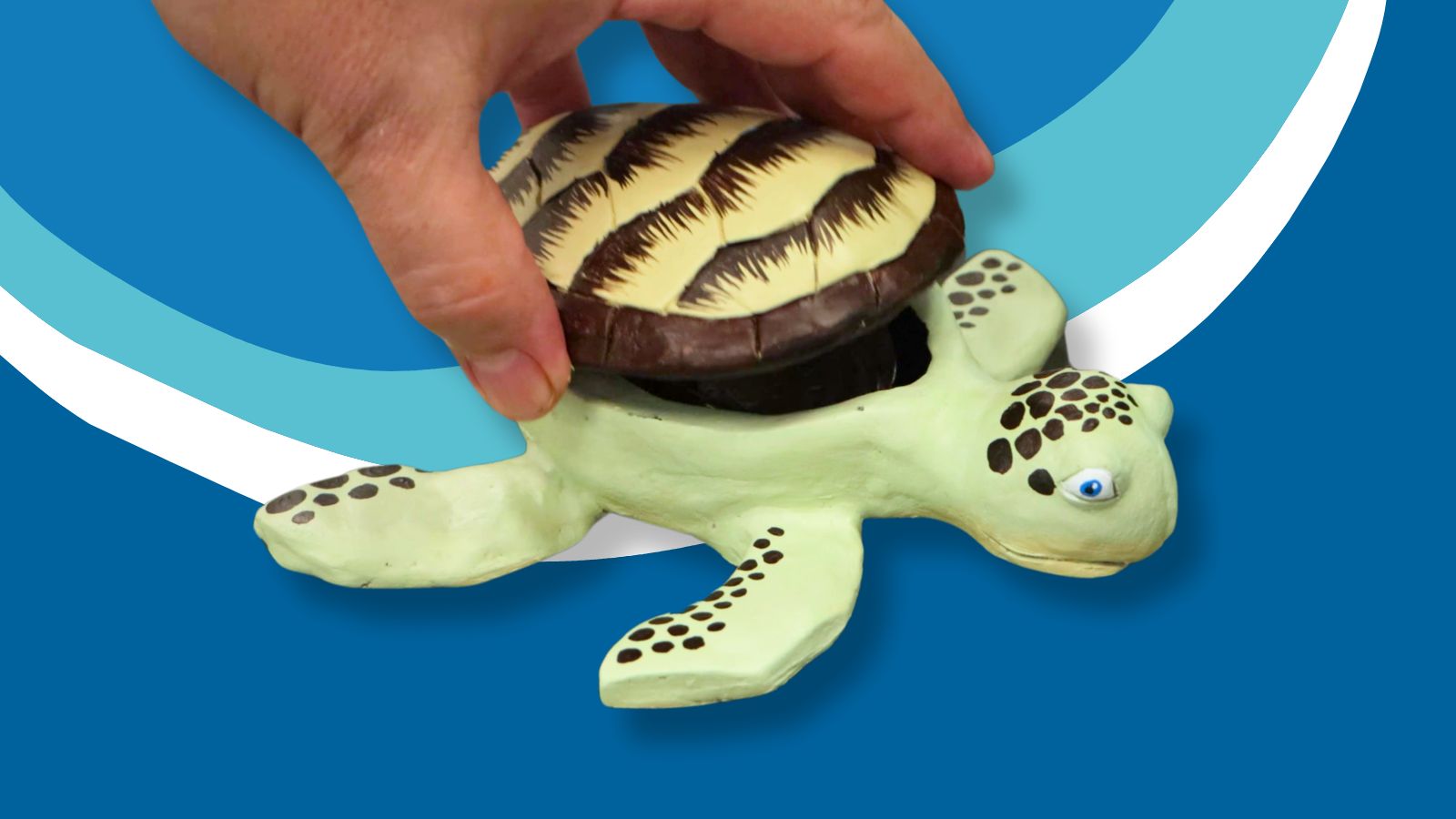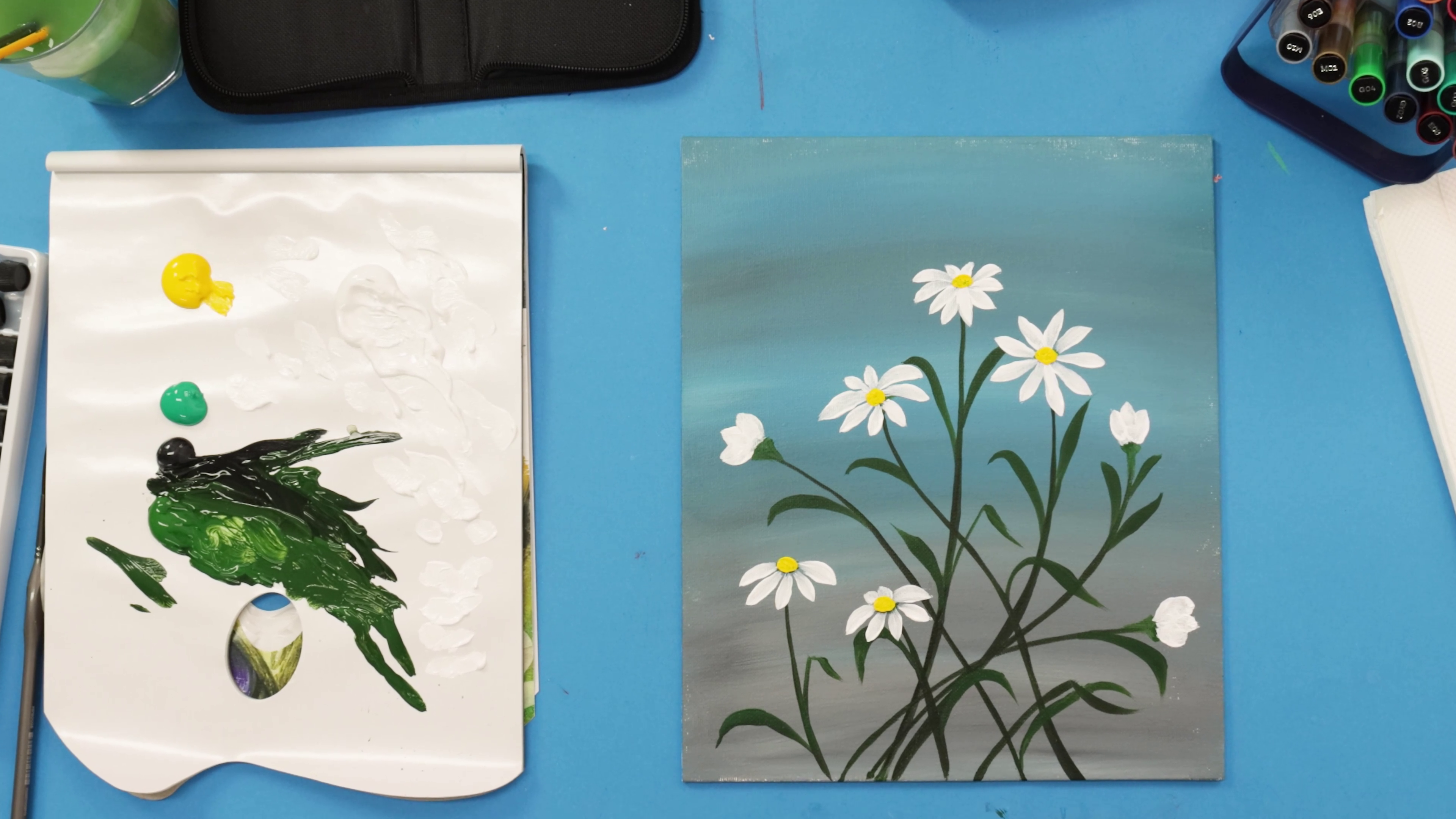Create a triceratops dinosaur sculpture in polymer clay part 2
In this lesson Joe paints a Triceratops sculpture he created from Mont Marte Polymer Clay. He uses acrylic paint and Mont Marte's new H2O Water Mixable Oils to bring his prehistoric creation to life.
How to paint a Triceratops Sculpture with Water Mixable Oil Paint and Acrylic paint H20 Water Mixable Oil Paint
The materials for this lesson can be found at a Gold or above art centre. Go to to find the one nearest to you. BMHS0008 Mont Marte Gallery Series Brush Set 6pce BMHS0014 Mont Marte Gallery Series Brush Set 4pce PMHS0012 Mont Marte Metallic Acrylic 4pce PMSA0010 Mont Marte Satin Acrylic Titanium White MCG0022 Mont Marte Tear off Paper Palette pad MACR0011 Mont Marte PVA Craft Glue MPOW0001 Mont Marte H2o Water Mixable Oil Paint Titanium White MPOW0003 Mont Marte H2o Water Mixable Oil Paint Flesh MPOW0005 Mont Marte H2o Water Mixable Oil Paint Mid Yellow MPOW0007 Mont Marte H2o Water Mixable Oil Paint Yellow Ochre MPOW0009 Mont Marte H2o Water Mixable Oil Paint Orange MPOW0011 Mont Marte H2o Water Mixable Oil Paint Cadmium Red MPOW0037 Mont Marte H2o Water Mixable Oil Paint Raw Umber Also required: Water Sand Paper Towel Materials Lis t . . .
Step 1. Undercoat As is the case with most models it is a good idea to undercoat them. In this case I have used Copper Acrylic from the 4 Piece Metallic Acrylic set. Lay this on with a large flat Taklon from a gallery series brush set. I then paint the head in with Titanium White. Paint in the Hoofs and eggs as well. Let this dry. Next paint the Bottom of the head with Copper and blend it into the white of the head, so the transition lies just under the horns. Step 2. Base colouring Squeeze out some Mid yellow, Orange and some Cadmium Red. These are in H2o Water Mixable Oil Paint. Using a small flat brush paint the yellow 3/4 of the way up the head shield ( the flounce). Then paint Orange adjacent to the Yellow and then paint the final 1/3 in with Cadmium Red. Paint it right up to the edge of the flounce. Next take a dry, clean brush and blend the 3 colours into each other so the transition is smooth. Squeeze out some Flesh colour and paint it into the under side of the body. Paint the underside of the neck from the head and the inside of the legs also. To create a glaze for the body, squeeze out some Burnt Umber and an equal amount of Linseed medium. Paint this mixture over the entire body. Ensure that it does not come into contact with the flesh colour. Next take a tissue and softly remove the Burnt Umber coat from the sculpture. You will find the tone will only be removed from the surface, but not the hollows. Let this dry. (This will take about 2 4 days) Painting a small neat dot can be quite difficult if the paint is not thinned to the correct viscosity. A good ratio is 1 part paint to 1 part mediu m. Another good tip is to spin the brush in the paint on charging, to fashion the tip to a point. 1 2
Step 3. Patterning Step 4. Detailing The detailing stage puts the icing on the cake and adds subtle realism. In this stage we render the eye area, horns, frill ornaments, beak and hooves. First the horns, frill ornaments, beak and hoofs. Create a mix of Yellow Ochre, White and Medium all in equal proportions. Lay this over the areas specified. Next add Burnt Umber in to the base area of the 3 Horns and blend this out as you move up the horn. Squeeze out some Black and dab a spot onto the tip of each horn, the beak and the frill ornaments. Blend this out as you move down each element. Squeeze out some Flesh tone and tint it with a touch of Red. Paint this into the area around the eye. To paint the eye lay Burnt Umber into the area and then add a little amount of Ivory Black into the Burnt Umber. The last step is to add a tiny dot of white to the eye. This will suggest a highlight. The patterning is a large part of the sculpture. The first step is to lay in some White torn patches from the tail and thenmoving to over the body. Refer to the first image of the PDF for guidance with this step. Suffice to say the patches decrease in size the closer you move up to the head. The next stage of this patterning is to add the Black dots. Start on the flounce and follow the general shape of the patterning outlined in the PDF. This patterning basically lays in lines with the corners softened. Add more black dots in between each white patch. Once the Black Dots have been Laid in add some White dots over the White patches. Step 5. Creating the environment Creating an environment really finishes off the model and adds to the realism. In this case it is quite simple. I have just applied PVA glue to the base with a flat paint brush, and applied sand over the appropriate area. Let this set for 10 minutes and then pour the excess sand off the base. The sand used is a fine sand used in sand pits and bird aviaries. 3 4 5
Material List
- Water Mixable Oil Paint 37ml (1.25oz) - Orange
- Water Mixable Oil Paint Premium 37ml (1.25oz) - Yellow Ochre
- Water Mixable Oil Paint 37ml (1.25oz) - Yellow Mid
- Water Mixable Oil Paint 37ml (1.25oz) - Flesh
- Water Mixable Oil Paint 37ml (1.25oz) - Titanium White
- Water Mixable Oil Paint 37ml (1.25oz) - Cadmium Red
- Water Mixable Oil Paint 37ml (1.25oz) - Raw Umber
- Metallic Acrylic 50ml x 4pc
- Acrylic Brushes Signature 4pc
- Gallery Series Brush Set Acrylic 6pce
- Tear-off Paper Palette Signature 50gsm 36 Sheet
- PVA Craft Glue Fine Tip 250gm




































